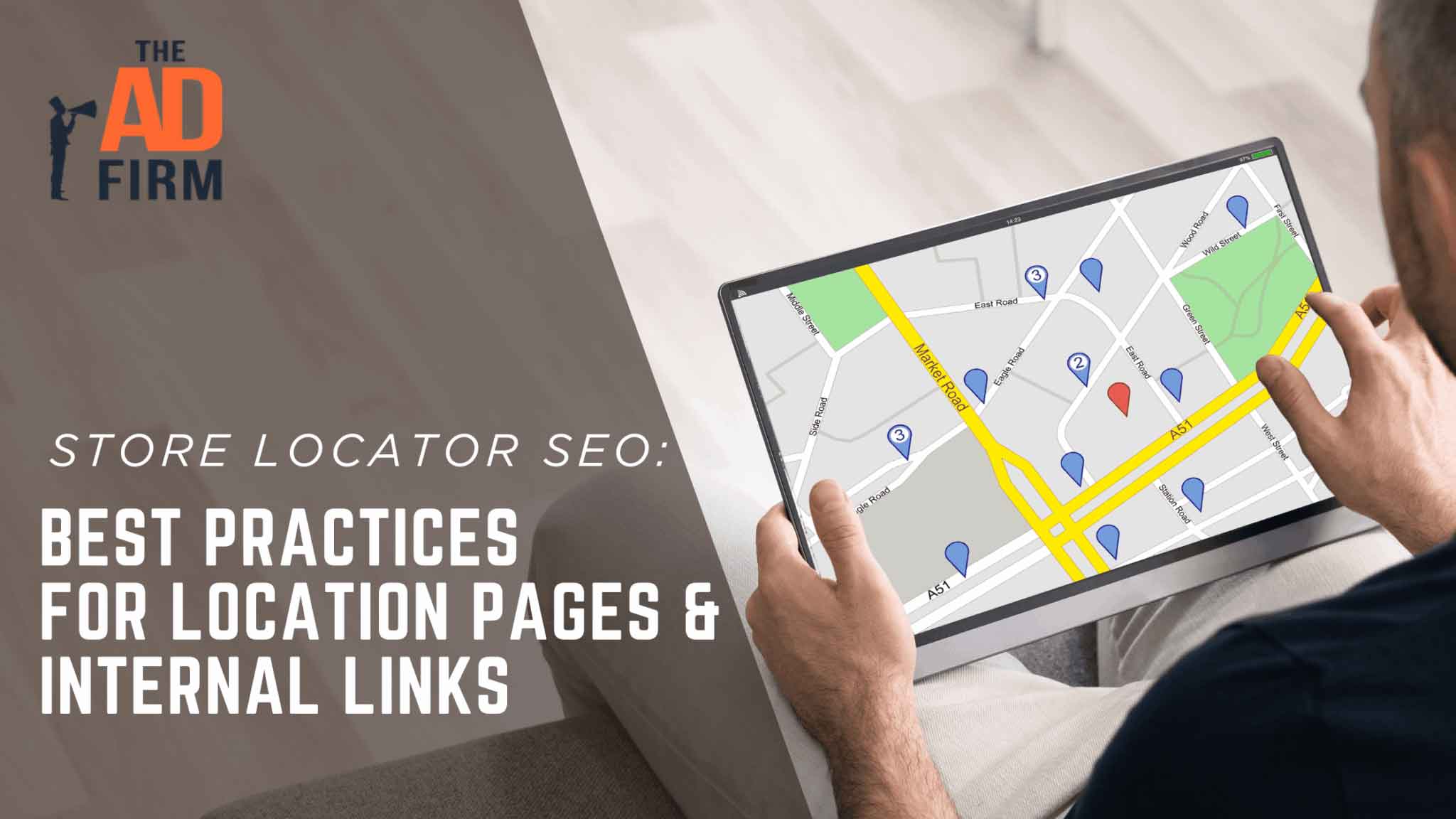When people search for a business near them, search engines prioritize local results. If your store locations aren’t optimized for local SEO, customers may never find them online. Store locator SEO focuses on turning each branch into a search-friendly page that ranks locally.
Using expert SEO services ensures your location pages are structured properly and designed to meet both user needs and search engine guidelines. This blog explains how optimizing your location pages and internal links can improve your rankings and attract more customers to each store.
What Is Store Locator SEO?
Store locator SEO focuses on optimizing the pages and structure of your website that list your physical store locations. This strategy improves how search engines read and rank your business locations in local search results.
Each store location page is treated like its own ranking opportunity, helping your website connect with nearby customers searching for products or services in your area. Store locator SEO is best handled by a digital marketing agency that understands local search strategies.
Why Optimizing Location Pages Matters
Each of your business locations deserves its own optimized page to help customers find nearby branches easily. Without properly structured location pages, your website risks missing out on valuable local traffic and customer visits.
Here are reasons to focus on optimizing these pages:
- Improves Local Search Visibility: Search engines prioritize location-specific content when showing results. Having detailed, optimized pages for each location improves your chances of ranking for local searches.
- Enhances User Experience: Customers looking for nearby stores need clear, useful information. A well-designed location page offers operating hours, contact details, and maps, making it easier for customers to visit your store.
- Supports Multi-Location SEO Strategy: Treating each location as a separate ranking opportunity allows your business to target various service areas effectively. This helps each branch build its local presence online.
Elements of High-Performing Location Pages
To help each location page rank and convert effectively, certain elements must be included. A structured approach makes these pages more useful to both search engines and customers.
Strengthen Your Online Authority with The Ad Firm
- SEO: Build a formidable online presence with SEO strategies designed for maximum impact.
- Web Design: Create a website that not only looks great but also performs well across all devices.
- Digital PR: Manage your online reputation and enhance visibility with strategic digital public relations.
To make your location pages work for SEO, include these essential elements:
NAP Details (Name, Address, Phone Number)
Search engines rely on your basic business details to verify each store’s legitimacy. Ensure that every location page lists the correct name, full address, and a local phone number that connects customers directly to the branch.
Consistency matters, and these details should exactly match the information on other platforms like Google Business Profile and online directories to avoid confusing both search engines and potential customers.
Localized Content
Adding locally relevant content helps distinguish each store from your other branches. Include city names, neighborhood references, nearby roads, and even well-known landmarks within your page copy. This signals to search engines that your page belongs to a specific location, increasing its chances of ranking when customers search for businesses in that area.
Unique Page Titles and Meta Descriptions
Each location page should feature its own title tag and meta description that mentions the store’s specific city or neighborhood. Using duplicate metadata across your pages can reduce your chances of ranking in local search results. Customizing these elements gives every branch its SEO focus, helping your website target multiple local keywords across different areas.
Here are sample formats you can follow:
- Title Example: ABC Coffee Shop in Irvine, California – Fresh Brews Daily
- Meta Description Example: Visit ABC Coffee Shop in Irvine, CA for handcrafted coffee and local pastries. Find store hours, directions, and more.
For another branch:
- Title Example: ABC Coffee Shop Anaheim – Your Neighborhood Café
- Meta Description Example: Stop by ABC Coffee Shop in Anaheim, California for your favorite coffee blends and fresh-baked treats. View hours and directions today.
Location-specific metadata not only improves your page’s search visibility but also attracts local customers who are looking for businesses in their exact area.
Embedded Google Maps
A visible Google Map embedded directly on the page makes it easy for customers to get directions. Besides helping visitors, this map also reinforces your local SEO by confirming your physical presence in a specific area. Search engines recognize embedded maps as an additional local relevance signal, helping boost your ranking.
Advance Your Digital Reach with The Ad Firm
- Local SEO: Dominate your local market and attract more customers with targeted local SEO strategies.
- PPC: Use precise PPC management to draw high-quality traffic and boost your leads effectively.
- Content Marketing: Create and distribute valuable, relevant content that captivates your audience and builds authority.
Business Hours
Your customers want to know exactly when they can visit your store. Listing up-to-date operating hours removes uncertainty and improves the overall user experience. Be sure to include special hours for holidays or seasonal changes, as incorrect hours can lead to missed visits or frustrated customers.
Customer Reviews or Testimonials
Reviews play a crucial role in building trust with local customers. Featuring reviews or testimonials unique to each location not only adds credibility but also shows that the individual branch delivers a quality experience. Positive feedback tied to specific locations helps reinforce their relevance in local searches.
Location-Specific Photos
Real images from each branch personalize your location page and create familiarity for customers before they arrive. Adding photos of your storefront, staff, interior spaces, or displayed products allows people to visualize the experience they’ll get at that exact location. Authentic, location-based visuals also help search engines understand that each page represents a distinct physical store.
Best Practices for Internal Linking
Internal linking refers to connecting different pages of your website through hyperlinks. For store locator SEO, linking location pages strategically helps distribute authority across your site and improves navigation. Implementing an effective internal linking strategy is a key element of strong local SEO services.
Agencies often focus on internal linking because it directly affects how search engines crawl your website and understand the relationship between your pages. By building these connections properly, each branch can gain the local visibility it needs to attract nearby customers.
To strengthen your internal linking strategy, follow these best practices:
- Link from the Main Store Locator Page: Your main store locator should act as a central hub that connects to every individual location page. Make sure each branch is directly linked from this master page. This helps search engines find and index all your location pages efficiently, while also giving customers an easy way to browse your different branches.
- Use Location-Specific Anchor Text: When adding internal links to your location pages, use anchor text that includes the specific city or branch name. For example, instead of generic text like “click here,” use descriptive text such as “View our San Diego store.” This supports local SEO by reinforcing your association with that location in both search engine algorithms and customer minds.
- Cross-Link Related Locations: If you operate stores close to one another, link those location pages together. For instance, your Riverside branch page can include a link to your nearby Corona location. This guides customers to alternative options nearby and helps search engines understand the relationship between your locations.
- Link from Relevant Service Pages: Don’t limit links to your locator or homepage. Include direct links to your location pages from relevant service or product pages as well. For example, if a customer is reading about your services in Los Angeles, include a link to your Los Angeles location page so visitors can easily find the nearest branch offering those services.
- Maintain a Clear Site Structure: Organize your website so that search engines—and users—can access each location page without going through too many layers. Your site hierarchy should make sense: main navigation, store locator, and individual locations.
Avoid burying location pages behind unrelated links or requiring several clicks to find them. A clear structure improves indexing and supports better overall SEO performance.
Transform Your Online Strategy with The Ad Firm
- SEO: Achieve top search rankings and outpace your competitors with our expert SEO techniques.
- Paid Ads: Leverage cutting-edge ad strategies to maximize return on investment and increase conversions.
- Digital PR: Manage your brand’s reputation and enhance public perception with our tailored digital PR services.
Common Mistakes to Avoid
It’s easy to overlook details that can harm your store locator SEO. Many businesses unknowingly make small errors that prevent their location pages from ranking well in local searches. The good news? These mistakes are avoidable once you know what to look out for.
Pay attention to these common issues that can quietly weaken your SEO efforts:
- Using One Page for All Locations: Combining all your store branches into a single page might seem convenient, but it limits your chances of showing up in local search results.
Search engines prefer clear, dedicated pages for each physical location so they can rank them individually for city-specific searches. When you list every branch on one general page, you’re competing for visibility with just one page instead of allowing each store to rank on its own.
- Duplicate Content Across Location Pages: Many businesses copy and paste the same content across all location pages, swapping only the city names. This strategy doesn’t help your SEO.
Search engines recognize duplicated content and may ignore those pages altogether. Each location page should feel unique, talk about the branch’s surroundings, staff, or local services to make the content distinct while still following your brand voice.
- Missing NAP Information: NAP stands for Name, Address, and Phone Number, three basic but critical details that should appear on every location page. Forgetting to include these or displaying incorrect information can confuse both customers and search engines. Consistent, accurate contact information not only helps potential customers reach your store but also improves your credibility and search ranking.
- Overlooking Mobile Optimization: A large portion of local searches happen on smartphones. If your location pages load slowly, display awkwardly, or require excessive scrolling on a phone, you’re likely losing customers. Every location page should load fast and display cleanly on all devices, especially mobile. Responsive design and fast-loading images are key to giving visitors a smooth experience.
- Ignoring Internal Linking: Proper internal linking connects your location pages to the rest of your website, helping search engines find and rank them.
If your location pages are buried deep without clear links from your main store locator or other service pages, they might not get indexed at all. Good internal linking not only improves SEO but also guides your visitors, helping them navigate between your different store locations with ease.
Elevate Your Market Presence with The Ad Firm
- SEO: Boost your search engine visibility and supercharge your sales figures with strategic SEO.
- PPC: Target and capture your ideal customers through highly optimized PPC campaigns.
- Social Media: Engage effectively with your audience and build brand loyalty through targeted social media strategies.
Measuring Success of Your Location Pages
Once your location pages are optimized, tracking their performance helps you measure success and identify areas for improvement. Metrics such as local keyword rankings, organic traffic, bounce rates, and conversion rates should be reviewed regularly.
Working with a digital marketing agency like The Ad Firm can help you track these results accurately and effectively. With professional guidance, you can assess whether your location pages are driving traffic, increasing visibility, and converting visitors into customers.
Our team can assist by providing:
- Detailed Performance Reports
Get clear, actionable reports on how each location page performs in search results, including keyword rankings and page traffic. - Custom Conversion Tracking
The Ad Firm can help set up tracking for specific goals, like calls, form submissions, or store visits, so you know how many leads your pages generate. - Ongoing SEO Audits
Regular page reviews help identify and fix any SEO issues before they affect your rankings. - Competitor Benchmarking
Compare your performance with local competitors to spot new opportunities and stay ahead. - Page Optimization Recommendations
Receive professional guidance on content updates, metadata improvements, and internal linking strategies to maintain strong SEO over time.
Let The Ad Firm help you monitor your location pages and improve your local SEO strategy. Contact our team today for expert SEO services designed to grow your business.





